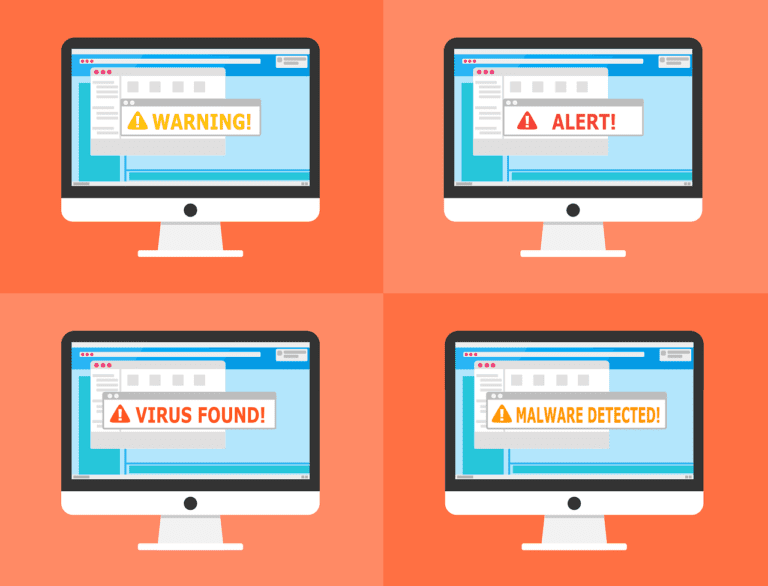What Are Cyber Threat Vectors?
In the digital era, where technology governs our daily lives, it is crucial to understand the potential risks that lurk online. This article aims to demystify the concept of cyber threat vectors and shed light on their significance in today’s interconnected world. By delving into the various forms and tactics used by cybercriminals, you will gain a better understanding of how they exploit vulnerabilities to penetrate systems and compromise sensitive information. So, brace yourself for an informative journey as we unravel the world of cyber threat vectors and equip you with the knowledge to stay safe in the virtual realm.
Understanding Cyber Threat Vectors
Definition and Introduction to Cyber Threat Vectors
Cyber threat vectors refer to the various avenues and methods through which cyber attacks are carried out. These vectors can be categorized into different types, including network-based, social engineering-based, and software-based vectors. Understanding the nature and characteristics of these threat vectors is crucial for organizations and individuals alike in order to effectively protect their systems and data.
Importance of Identifying and Understanding Cyber Threat Vectors
Identifying and understanding cyber threat vectors is of paramount importance in today’s digital landscape. It allows individuals and organizations to assess the potential risks and vulnerabilities they face, enabling them to develop more robust cybersecurity measures. By understanding how cyber attacks are launched, the specific techniques used, and the weaknesses they exploit, individuals and organizations can better prepare themselves against potential threats.
Different Types of Cyber Threat Vectors
Network-Based Cyber Threat Vectors
Network-based cyber threat vectors involve the exploitation of vulnerabilities in computer networks. These threats can come in various forms, such as malware infections, denial-of-service (DoS) attacks, and man-in-the-middle (MitM) attacks.
Social Engineering-Based Cyber Threat Vectors
Social engineering-based cyber threat vectors focus on manipulating human psychology to gain unauthorized access to systems or sensitive information. Common examples include phishing attacks, spear phishing attacks, and baiting attacks.
Software-Based Cyber Threat Vectors
Software-based cyber threat vectors revolve around vulnerabilities in operating systems, web applications, and outdated software/firmware. Cybercriminals can exploit these vulnerabilities to gain unauthorized access or carry out malicious activities.
Network-Based Cyber Threat Vectors
Malware Infections
Malware, short for malicious software, includes a wide range of harmful programs designed to damage or gain unauthorized access to computer systems. Malware infections can occur through various means, such as clicking on malicious links, downloading infected files, or visiting compromised websites. Once infected, malware can carry out activities like data theft, system damage, or controlling the infected system to launch further attacks.
Denial-of-Service (DoS) Attacks
Denial-of-Service attacks aim to overwhelm a target system or network with an overwhelming amount of traffic, rendering it unavailable to legitimate users. This is achieved by flooding the target with an excessive number of requests or exploiting vulnerabilities in the network infrastructure. DoS attacks can disrupt services, cause financial losses, and harm an organization’s reputation.
Man-in-the-Middle (MitM) Attacks
In a Man-in-the-Middle attack, an attacker intercepts and relays communication between two parties without their knowledge. By eavesdropping and potentially altering the communication, the attacker can steal sensitive information, such as login credentials or financial data. MitM attacks can be particularly dangerous when conducted on unsecured public Wi-Fi networks or compromised routers.
Social Engineering-Based Cyber Threat Vectors
Phishing Attacks
Phishing attacks involve tricking individuals into divulging sensitive information, such as passwords or financial details, by pretending to be a trustworthy entity. These attacks typically occur through fraudulent emails, text messages, or websites that mimic legitimate organizations or individuals. Awareness of common phishing techniques and thorough scrutiny of requests for personal information are vital in combating phishing attacks.
Spear Phishing Attacks
Spear phishing attacks take phishing to a more targeted level. In this type of attack, cybercriminals carefully research and craft tailored messages to specific individuals or organizations to increase the likelihood of success. By utilizing personalized information, such as names of colleagues or company-specific details, spear phishing attacks can trick even the most cautious individuals or organizations.
Baiting Attacks
Baiting attacks entice victims with the promise of something valuable, such as free software, media downloads, or prizes. These offers are used as bait to convince users to download malicious files or visit compromised websites, unknowingly compromising their systems. Baiting attacks rely on human curiosity and the desire for something for nothing, making them a potent threat.
Software-Based Cyber Threat Vectors
Vulnerabilities in Operating Systems
Operating systems are complex software systems and are prone to vulnerabilities. Cybercriminals exploit these vulnerabilities to gain unauthorized access or carry out malicious activities. It is essential for users and organizations to regularly update their operating systems with the latest security patches and fixes to mitigate these risks.
Web Application Vulnerabilities
Web applications often serve as entry points for cyber attacks. Vulnerabilities in these applications can enable attackers to exploit them and gain unauthorized access to databases or compromise user accounts. Regular security assessments, including penetration testing, can help identify and address these vulnerabilities proactively.
Outdated Software and Firmware
Using outdated software and firmware exposes systems to unnecessary risks. Cybercriminals actively search for vulnerabilities in old software versions that have not been patched or updated by vendors. Keeping software and firmware up to date ensures that security patches are applied, closing potential avenues for cyber attacks.
The Impact of Cyber Threat Vectors
Financial Losses
One of the significant impacts of cyber threat vectors is the potential for significant financial losses. Cyber attacks can cripple organizations, leading to the loss of revenue, business disruptions, and expensive incident response and recovery efforts. Additionally, individuals may suffer direct financial losses through banking fraud, unauthorized transactions, or identity theft.
Reputation Damage
Experiencing a cyber attack can severely damage an organization’s reputation. A data breach or other cyber incident can erode customer trust and confidence, leading to loss of business and long-term damage to a brand’s image. Rebuilding reputation and trust can be a challenging and costly endeavor.
Data Breaches and Loss of Sensitive Information
Cyber attacks can result in the theft or compromise of sensitive information, such as personal data, intellectual property, or trade secrets. Data breaches can have severe consequences, including regulatory penalties, legal actions, and the potential for identity theft or fraud. Protecting sensitive information is critical for both individuals and organizations.
Protection Against Cyber Threat Vectors
Firewalls and Intrusion Detection Systems
Deploying firewalls and intrusion detection systems (IDS) is a crucial step in protecting against network-based cyber threat vectors. Firewalls act as a barrier between internal networks and external connections, filtering and monitoring incoming and outgoing traffic. IDSs monitor network activity for suspicious patterns or behaviors, providing early detection of potential cyber attacks.
User Awareness and Training
Education and user awareness are essential in combating social engineering-based cyber threat vectors. users should be trained to recognize common phishing techniques, avoid clicking on suspicious links, and practice good cybersecurity hygiene. Regular training sessions, simulated phishing exercises, and ongoing awareness campaigns can help develop a vigilant and security-conscious workforce.
Regular Software Updates and Patch Management
Keeping software and firmware up to date is crucial in mitigating software-based cyber threat vectors. Vendors regularly release security patches and updates to address vulnerabilities. Establishing a robust patch management process ensures that critical security updates are applied promptly, minimizing the risk of exploitation by cybercriminals.
Challenges and Future Trends in Cyber Threat Vectors
Evolving Sophistication of Cyber Attacks
Cyber attacks are becoming increasingly sophisticated, making it challenging for individuals and organizations to stay ahead of threats. Attackers constantly adapt their tactics, leveraging new technologies and techniques, such as artificial intelligence (AI) and machine learning (ML). Addressing these evolving threats requires constant vigilance, proactive monitoring, and continuous improvement of cybersecurity strategies.
Emerging Threats in Internet of Things (IoT)
The proliferation of Internet of Things (IoT) devices introduces new cyber threat vectors. Many IoT devices have inherent security weaknesses and can be easily compromised. As IoT adoption continues to grow, securing these devices and preventing potential attacks will become even more critical.
Artificial Intelligence and Machine Learning in Cybersecurity
While AI and ML have the potential to enhance cybersecurity, they can also be exploited by cybercriminals. Attackers can employ AI-powered tools to automate and optimize their attacks, making them more effective and harder to detect. To combat this, cybersecurity professionals must leverage AI and ML themselves to develop robust defense mechanisms and detect emerging threats.
Conclusion
Understanding cyber threat vectors is essential for individuals and organizations alike. By recognizing the different types of threat vectors and the risks they pose, proactive measures can be taken to protect against cyber attacks. Implementing a combination of technological solutions, user education, and regular updates can help mitigate the impact of cyber threat vectors and uphold the security and integrity of systems and data.








